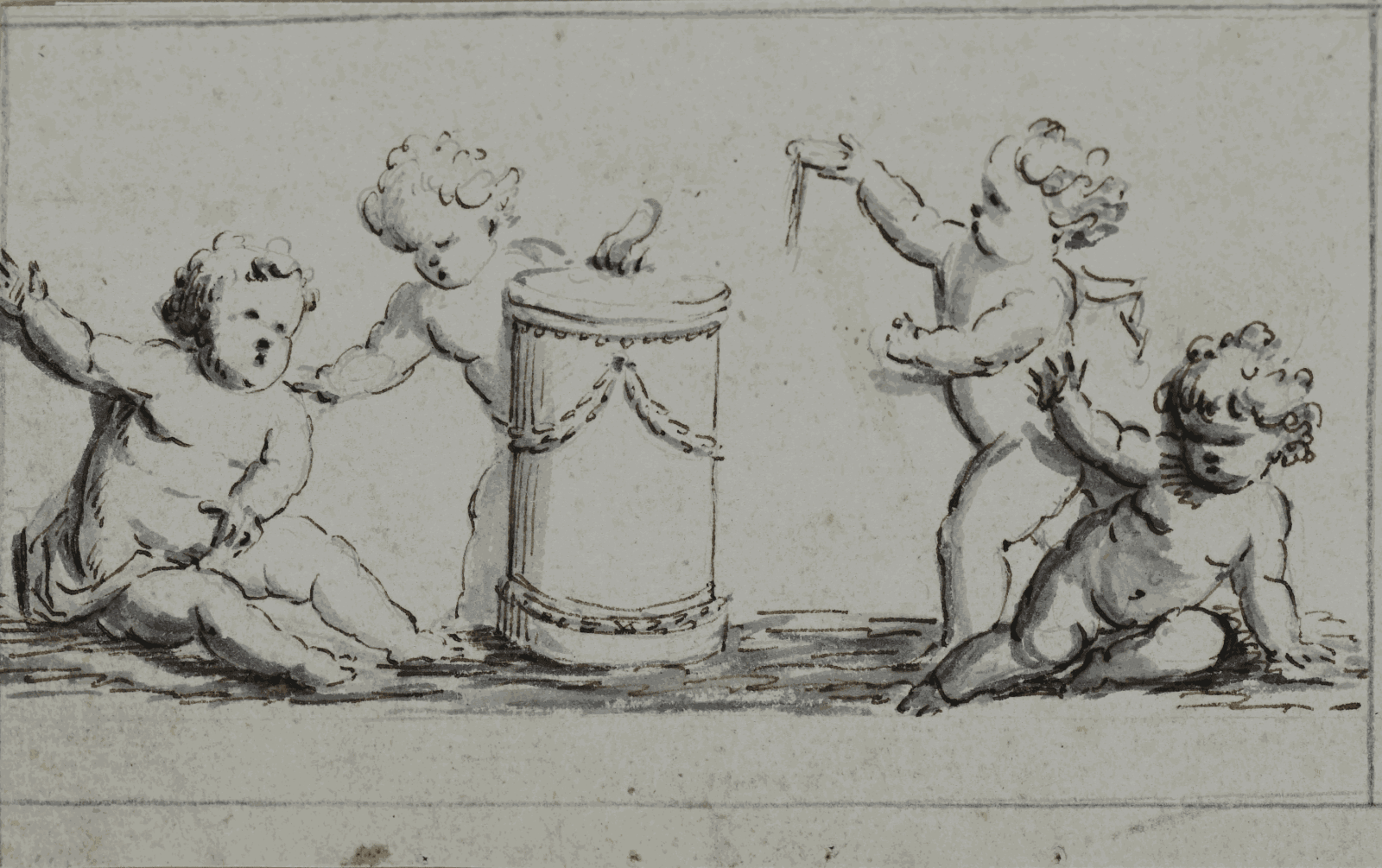Daniel II Herreyns (Antwerp ca. 1725 - 1781)
Daniel Herreyns the Younger was born ca. 1725, probably in Antwerp. It is not known who taught him, although he hailed from an artistic family – his father was the artist Jacobs II Herreyns. In 1751 he became a member of the Antwerp guild of St Luke. Until 1772 he taught many draughtsmen and sculptors, such as Guillaume Roefs and Petrus Schellinckx. Except for his “Head of a Giantess”, which he made for the Antwerp Ommegang (a parade) in 1761, his work mainly consists of decorative panels, destined for town houses. For a grand house on the Vrijdagmarkt – now the Plantin-Moretus museum (Antwerp) – for instance, he produced in 1781 a series of six sopraporte panels, which can still be seen in the museum today. Daniel Herreyns’ style is defined by a refined classicism; as a sculptor, his treatment of low reliefs may be considered especially virtuoso.
The present drawing, depicting a group of putti around a pagan altar (a motif seen in more drawings by the artist), was in the collection of Charles Van Herck, an important Antwerp-based art dealer and auctioneer who specialized in drawings as well as terracottas by Flemish baroque sculptors, amassing a great collection of them during his lifetime. More than forty years after his death, the bulk of his estate was purchased by the King Baudouin Foundation; most of it was given as a loan to major Belgian institutions and museums.
Provenance
Charles Van Herck collection, Antwerp;
Private collection, Antwerp.
